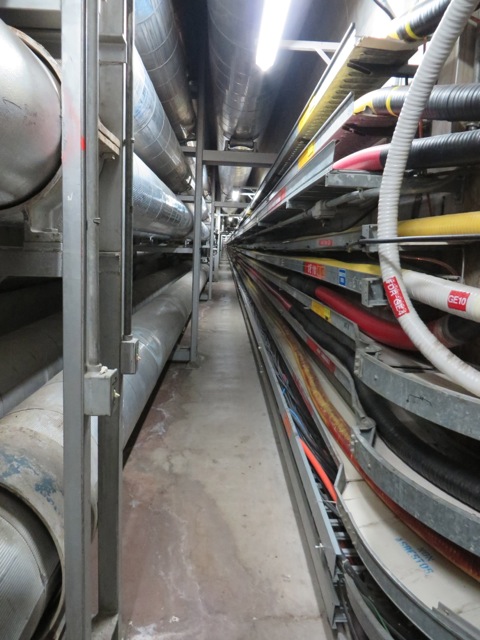 When I was 6 years old I wanted to make lemonade stand money.
When I was 6 years old I wanted to make lemonade stand money.
But it wasn’t summer. And I lived in Seattle.
Rain. Clouds. Dark. Not really the time for a lemonade stand.
Besides, even my 6 year old brain knew lemonade was a commodity.
I would innovate.
But where to start?
Lemonade was out—and I didn’t want to be unoriginal with cookies—the girl scouts already conquered that market. Boy scouts took popcorn…
I needed something new, original, fun, and great tasting. Something no one had ever thought of before.
And with that burning determination I got to work in the kitchen.
Days later, and after some close calls with sharp objects and boiling water, I had created…
Noodlefruit!
What is Noodlefruit you ask?
A combination of noodles and fruit. Naturally!
Sure, maybe this wasn’t the best thought out plan. But hey, Noodlefruit tasted great, and taught me a lot in the process.
Here’s 4 things I learned from creating, producing, and selling Noodlefruit.
1.) Your market’s product, problem, and solution awareness should determine your sales approach.
If I had been selling lemonade I could have sat by the road. I could have put a pitcher of lemonade on a card table. I could have displayed a sign that said, “Lemonade, 25 Cents.” Or maybe I could have gotten a little more clever with the wording.
My prospects would have remembered other lemonade stands in their own neighborhood. They might have even set up a lemonade stand of their own in the past.
The point being, prospects in this market would have already known about lemonade stands.
With a lemonade stand there would be very little confusion or skepticism, and I wouldn’t need to educate my prospects on the wonderful taste and refreshing qualities of lemonade.
They also understood their problem and the solution to that problem.
The problem wasn’t that they were thirsty and needed a drink. The problem was that there was a kid, with puppy-dog-eyes, right in front of them, asking for only a small amount of money to make that kid’s dreams come true.The solution to that problem was for the prospect to simply give 25 cents to the kid. Drink their lemonade and smile.
To recap: The lemonade stand market is very product, problem and solution aware.
However, the Noodlefruit market was a whole different story.
I knew that if I set up a “Noodlefruit stand” on the side of the road, cars would be driving by with their heads rubbernecking in confusion. But I doubted I’d get anyone to actually stop.
“Hey honey, did you see that little kid? What the heck was he selling? Noodles?”
They were completely product unaware. And they didn’t currently have a problem that they associated Noodlefruit to as the answer.
The Noodlefruit market was product unaware, problem unaware, and solution unaware.
So, I had to make them aware. But not through some costly advertising channel.
I was a kid! I didn’t have that kind of money! I needed to “bootstrap” my way to success.
I’d have to go beat the street and walk door to door.
My prospects may have been problem unaware, but I was going to make myself their problem. I was going to show up at their front door with a little red wagon full of Noodlefruit, pre-packaged in little dixie cups.
As soon as they opened their door… I was their problem.
But, good news, I had the solution.
Just buy my Noodlefruit and everything will be awesome. I promise.
2.) Selling something feels very vulnerable.
Everyone knows rejection hurts, and most people avoid it however they can.
Studies have shown that our brains see rejection as the same thing as physical pain. Pain killers even work to help ease the pain of rejection.
When you’re selling something, you are essentially standing in front of someone and saying “Hey, please don’t punch me in the face.”
But you know full well, most people will need to say “I’m sorry, but I have to punch you right now.”
And they should.
No one can possibly say yes to every sales pitch they encounter. That would be crazy.
But every time they say no to a salesperson, that salesperson feels physical and mental pain.
The good news is that salespeople build up resistance to being punched in the face over time, and they feel the pain less intensely. But the fact remains, they are experiencing some level of real pain with every rejection.
People know that on some deep level, and that’s a big part of what makes sales scary. Standing in front of someone who has the power to deliver a punch to your face with just one word.
“No.”
Anyone who says rejection doesn’t hurt is lying.
Beyond the inevitable pain, selling makes you visible.
If you walk around door to door in your neighborhood, you are no longer anonymous. You have now made an impression on the people you interacted with.
And it’s usually a very strong impression.
It’s not like you are just saying “Hey! How are ya?” Or having a conversation about the weather.
If you’re selling something, even in the lowest pressure of sales situations, you’re still asking for something. You’re creating an uncomfortable situation for the majority of people.
On the other hand, they might delighted that you added some fun and excitement to their day. You have something new and exciting to show them.
“Hey! Honey! Come see what this kid is selling!”
In either situation, it is not a neutral interaction. You have made an impression. You either made people like you more, or like you less than the average random person.
Now they remember you.
If they make a purchase, you are now responsible for their product experience. If they have a good experience, then that reflects positively on you. If they have a bad experience, then you are associated with the negative experience.
In any situation, more people are now exposed to you, more people know you, more people have an opinion of you, and it is much harder to hide in the shadows.
You are now visible, accountable, and responsible for a part of people’s lives.
That’s tough at any age.
3.) How to execute on an idea.
It’s one thing to come up with an idea. And it’s a completely different thing to bring that idea into the world.
I was lucky to have a supportive and loving family. They helped me implement along every step of the way. They bought me the noodles, the fruit, the pots and pans, the red wagon and the dixie cups.
My mom and dad even helped me prepare and package Noodlefruit.
I’m very grateful that they didn’t immediately knock down my Noodlefruit idea as being too silly or crazy. They could have easily said things like, “That would never work”, or “Why don’t you just set up a lemonade stand?”
Instead, all they did was enable my crazy idea, and help me along the way.
If it weren’t for them, Noodlefruit would have never happened.
This is similar to having a great team to help execute an idea. Your team must support the big idea, and work together to make it happen.
I got to experience the product creation process from idea, to creation, to sales.
That simple process is the engine behind any successful business.
And it takes a supportive team to run that engine.
4.) Unless your product is awesome, no one will buy again.
You don’t see many kids behind lemonade stands handing out business cards along with their glasses of lemonade. And that’s because they know they’re only in business for as long as they’re standing on that corner.
They know no one will be beating down their door for more of their lemonade when they’re thirsty tomorrow.
That’s because most lemonade at lemonade stands is just average. Most people could easily buy the same thing at a store for less money. And therefore, they are going to go to the store when they want lemonade.They won’t be calling those kids on the corner.
In order for people to come back for more, you need a superior product, and the lemonade at lemonade stands just don’t cut it.
I don’t think Noodlefruit did either. Sure, it was new, interesting, and I believe it tasted pretty good. But was it mind blowingly good? No.
Could I have sold more if I kept doing rounds to the same people over and over again? Probably. But it would have been a harder sale every time around.
In order for a business to have repeat customers coming back willingly, without much push on your end, you need to have a truly great product that people find themselves wanting to buy. Even when the lemonade stand is shut down, or the Noodlefruit salesman is not at your door.
 Did you know there are over 7 miles of interconnecting tunnels that run underneath the University of Washington?
Did you know there are over 7 miles of interconnecting tunnels that run underneath the University of Washington?